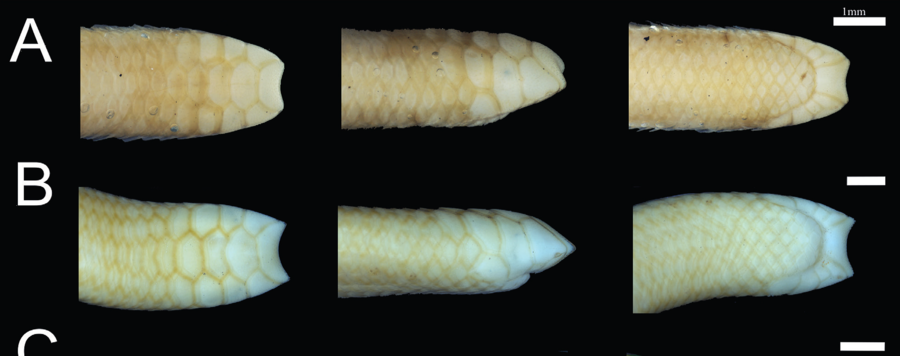
An evolutionary paradox on threadsnakes: Phenotypic and molecular evidence reveal a new and remarkably polymorphic species of Siagonodon (Serpentes: Leptotyphlopidae: Epictinae) from Amazonia
Threadsnakes are known for their conserved external morphology and historically controversial systematics, challenging taxonomic, biogeographic and evolutionary researches in these fields. Recent morphological studies—mostly based on μCT data of the skull and lower jaw—have resolved systematic issues within the group, for instance leading to the description of new taxa or re-positioning little-known scolecophidian taxa in the tree of life. Herein we describe a new polymorphic species of the genus Siagonodon from Amazonia based on morphological (external, osteology and hemipenis) and molecular data, and provide the first hemipenial description for the genus. We also reassign Siagonodon acutirostris to the genus Trilepida based on osteological data in combination with molecular evidence. The new species described represents an evolutionary paradox for scolecophidians because the species displays a remarkable variation in the shape of the snout region that is otherwise always highly conserved in this clade. Finally, this study reinforces the importance of protected areas as essential in maintaining vertebrate populations, including those that are not yet formally described.






